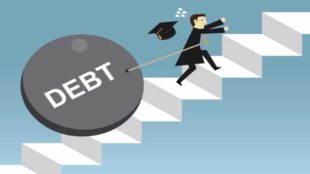The Price Is Not Right: Solving Student Debt Starts with Stopping Soaring Tuition Cost
(Source) On August 8, 2020, the former Secretary of Education renewed the suspension of student loans, stopped collections, and waived federal loan interest until the end of the year. The action taken by the federal government acknowledges that there is a problem but addresses only the immediate threat by providing temporary relief. In September, some senators called for the former President to cancel $50,000 of student borrower debt under the Higher Education Act, the effects of which would endure beyond the pandemic. However, both solutions are limited, as they fail to address the source of the student debt crisis: the precipitously increasing cost of higher education placing borrowers in a strenuous situation: paying off thousands of dollars in student loan debt for ages after graduation. Part of the challenge of addressing the larger problem lies in the lack of consensus about what causes the price of higher education to increase. Bill Bennett, the Reagan Administration’s Secretary of Education, launched one prominent theory on why tuition prices continue to climb. Commonly known as the Bennett Hypothesis, Bill Bennett blamed colleges for exploiting federal financial aid expansions by raising tuition prices, believing the subsidies would“cushion the increase.” He criticized colleges for being [read more]



